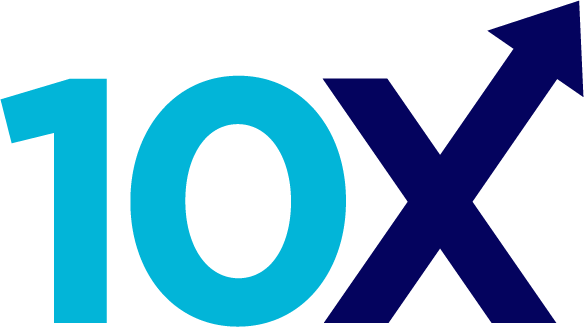Lessons from Jimmy Buffett: Applying Marketing Mastery to Mega Gift Fundraising

When we think of Jimmy Buffett, we might picture sun, fun, and laid-back music like Margaritaville or Come Monday. But Buffett’s legacy goes far beyond his music—it’s a masterclass in marketing. With his unique blend of tropical rock and the carefree beach bum lifestyle, Buffett built a billion-dollar empire that spanned resorts, restaurants, apparel, and even retirement communities. As we reflect on Buffett’s success, it’s clear that he mastered the four key marketing principles outlined by Richard Viguerie: Positioning, Differentiation, Benefit, and Brand. These same principles are invaluable for fundraisers seeking to Go Big with Mega Gifts. Applying the Four Horsemen of Marketing Positioning: Buffett created his own category—Gulf + Western—a unique blend of country music and tropical vibes. For fundraisers, positioning means finding your organization’s “hole in the marketplace.” What unique need or problem are you solving, and how do you stand out? Differentiation: Buffett’s differentiation was clear—from Hawaiian shirts to steelpan music, he created an image and experience that was unmistakably his own. Your organization’s differentiation should reflect a distinctive approach or program that no one else can offer. Benefit: Buffett sold more than music—he sold escapism. A break from the stresses of life, allowing fans to feel like they were part of a community of carefree beachgoers. In fundraising, the benefit must always focus on the donor. How will they be part of solving a big, meaningful problem? How will their contribution improve lives? Brand: Finally, Buffett’s brand—Margaritaville—was so powerful that it became a lifestyle. For your organization, your brand should encapsulate your mission, values, and the transformative change you offer. It should be so compelling that donors want to be a part of it. What is a Mega Gift? As we shift our focus to Mega Gifts, these same principles apply. Mike Lanzara, a major gifts expert, explains that a Mega Gift is not just a large financial contribution—it’s consequential and transformational. It’s an inflection point in the donor’s relationship with your organization, and it must: Address a big problem with a credible solution Involve co-creating a solution with the donor Represent a significant financial and emotional commitment from the donor Be a source of pride and lasting impact Inspire other donors to follow suit In short, a Mega Gift is a game-changer—for the donor, for your organization, and for the cause you both care about. Evaluating Your Organization’s Readiness for Mega Gifts Before you can secure a Mega Gift, you need to assess whether your organization is positioned to attract such transformational support. Mike recommends using the Four Horsemen of Marketing as a checklist to determine your readiness. Do you have projects that: Could attract a gift 10x larger than the donor’s previous contributions? Address big, pressing problems that resonate with your donors? Reflect a unique positioning that sets you apart from other organizations? If you can answer “yes” to these questions, you’re on the right track. And if not, it may be time to reassess your organization’s strategy and develop new initiatives that can truly attract major support. The Buffett Lesson for Fundraisers Jimmy Buffett’s marketing mastery offers a powerful lesson for fundraisers: focus on positioning, differentiation, benefit, and brand, and you’ll create a compelling case for support. Whether you’re asking for a modest contribution or a Mega Gift, these principles will help you stand out, inspire donors, and Go Big.
Obvious Actions Lead to Big Results in Mega Gift Fundraising

In the world of fundraising, sometimes the best solutions are the most obvious. As Robert Updegraff highlights in his classic work, Obvious Adams, the ability to see and do the obvious is a skill we often overlook. This principle is especially relevant when we think about the pursuit of Mega Gifts in fundraising. Going Big! with Mega Gift Fundraising, lays out fourteen key questions to guide your efforts in securing transformative contributions. After covering the first three questions—defining a Mega Gift, assessing your organization’s potential, and collaborating to attract big donors—today we tackle the next critical step: How Do You Prioritize Donors for a Mega Gift? The answer, as Michael Lanzara, a seasoned major gifts fundraiser, puts it, is simple: focus on donors who get excited about solving BIG problems. These are the people most likely to contribute at a mega level. It seems obvious, right? But often we overlook this clear truth in favor of complex strategies and over-complication. Lanzara explains that while long-term donor relationships, trust, and past giving history are important, the most successful Mega Gift donors are those who have a BIG mindset. These donors are accustomed to thinking on a large scale, whether from their personal or professional lives, and are looking to make a significant impact on society. How Do You Identify These Donors? The best way to find out who’s ready to “Go Big” is to ask them. Engage with your donors through meaningful conversations, and listen closely to their goals and concerns. Lanzara recommends starting with simple, open-ended questions: What do you see as the most pressing problems facing society today? Which problems do you believe our organization is best positioned to help solve? What is one big issue you would like to address in your lifetime? These questions help donors feel involved in your mission and clarify how their support can help solve the problems they care about most. This is the foundation for a strong, win-win partnership where donors don’t just give—they invest in solving BIG challenges. Why Focus on the Obvious? As Lanzara points out, it’s easy to overcomplicate fundraising strategies. But just like in Obvious Adams, the key to success is often right in front of us. The donors who are most likely to give at a Mega Gift level are those who already think big, solve big problems, and want to make a major difference. It’s that simple.
It’s About Them: How to Make Your Offer Benefit Donors

In the world of fundraising, it’s easy to get caught up in thinking about your own goals and objectives. But the most successful campaigns are the ones that focus on the donor—on how they benefit from supporting your cause. At the core of fundraising and marketing are three critical principles: Positioning, Differentiation, and Benefit. Together, these concepts help shape your brand and define how you stand out in a crowded marketplace. While we’ve already discussed positioning and differentiation in previous posts, today’s focus is on Benefit—perhaps the most powerful driver behind why people give. What’s in It for Them? The first rule of benefit is understanding that it’s not about you or your cause. It’s about them—your donors, supporters, or volunteers. The question you should ask yourself is, how will they be better off by taking the action you want them to take? A benefit is not just a feature or a description of what you offer. It’s what improves your donor’s life in some way—whether that’s making them feel good, providing them with new knowledge, or giving them a sense of pride and purpose. When you focus on the benefit to the donor, you create a win-win partnership that goes beyond a simple transaction. Real-World Examples: The Power of Tangible and Intangible Benefits Let’s look at a few examples from Highland County’s Maple Festival, which we’ve been discussing in recent weeks. What makes this tiny Virginia county with just 2,000 residents able to attract over 50,000 visitors annually since 1958? They effectively tap into the power of benefits. Tangible Benefits: At the festival, local service clubs offer free pancakes all day long. This is a clear, tangible benefit—if you love pancakes, this offer makes your experience more enjoyable. Similarly, visitors can learn firsthand how maple syrup is made at Sugar Camps, providing them with new knowledge and a unique experience they can’t get anywhere else. Emotional Benefits: Beyond the tangible, the festival also taps into something deeper—nostalgia and the desire to escape. Many people are drawn to the rural, idyllic setting because it reminds them of a simpler time, where anxieties fade away. This emotional connection is powerful and creates a strong pull for visitors year after year. Applying Benefits to Your Cause As you develop your fundraising or marketing campaign, ask yourself: What are the tangible and intangible benefits you can offer to your donors? How will their lives be better by supporting your cause? Consider doing a brainstorming exercise where you come up with 5, 10, or even 15 possible benefits for your target audience. These benefits can be emotional, intellectual, or even related to their personal beliefs and values. By identifying and emphasizing these benefits in your communications, you’ll stand out in a crowded space and create meaningful connections with your supporters. Wrapping It All Together Positioning, differentiation, and benefit are the building blocks of your brand. And your brand is what allows you to Go Big and make a real impact.
The Power of Prospecting: Your First Step to Supercharge Fundraising

In the world of fundraising, there’s one fundamental activity that lays the foundation for everything else: prospecting. It’s where the seeds are planted, and without it, the rest of your fundraising efforts will struggle to take root. So, why should prospecting be your first “One Thing” when aiming to elevate your fundraising strategy? To answer this question, I asked two top experts to share their insights. Both John Griswold, a direct marketing veteran, and John Davis, who has helped dramatically grow donor engagement at the Leadership Institute, agree: prospecting is the cornerstone of long-term success. Why Prospecting is the “One Thing” John Griswold, a master of direct mail programs for organizations ranging from think tanks to military groups, puts it simply: “Prospecting is your seed corn from which all other fundraising can grow.” By identifying new donors, you’re not just adding names to a list—you’re building the foundation for all future giving, whether through direct mail, events, or even planned giving. He emphasizes that cracking the code of prospecting helps you unlock many other keys to donor retention and upgrades. “Prospecting is the ONE THING,” Griswold asserts. Without it, your efforts to build relationships and raise substantial funds will be stunted from the start. A Proven Strategy John Davis of the Leadership Institute shares how prospecting transformed the organization’s fundraising efforts. In 2011, he was given a bold challenge by the institute’s president, Morton Blackwell: increase prospecting mail efforts so dramatically that they would need to borrow money to keep up. The result? Not only did Davis increase the number of donors, but he did so in such a way that it greatly expanded the Leadership Institute’s overall donor pool. The impact was so significant that, despite all the additional fundraising efforts, they never ran out of money! A solid prospecting strategy not only helps bring in new donors, but it can also identify potential major donors—people who might give $10,000 or more either immediately or over time as trust is built. Looking Ahead: Four Weeks of Prospecting Insights As we dive deeper into prospecting over the next four weeks, we’ll explore specific strategies you can implement to take your efforts to the next level. We’ll start by discussing, “What One Thing Should You Do First? Developing Your Vision & Strategy and Assessing Your Opportunities.” This will set the stage for a series of practical tips and expert interviews. If you’re eager to get started right away, consider picking up two recommended books: Fund Your Cause with Direct Mail by Ben Hart and Revolution in the Mailbox by Mal Warwick. Both offer in-depth strategies to make your prospecting efforts as effective as possible. Your Next Steps Prospecting is more than just identifying potential donors—it’s about laying the groundwork for meaningful relationships that will help you achieve your organization’s long-term vision. Over the coming weeks, you’ll discover how to refine this crucial process and make it your “One Thing” for boosting your fundraising success. Stay tuned as we continue this important conversation and explore more ways to supercharge your efforts!
Giving: The True Essence of Fundraising

When we think about fundraising, it’s easy to focus on the ask. After all, as I’ve mentioned before, asking is the fundamental building block of our work. But as we step back and consider what truly drives our efforts, it becomes clear: it’s not just about receiving, it’s about giving. At the heart of every great cause, and at the center of every successful fundraising campaign, is a deep desire to make a lasting impact. As Peter Drucker so wisely noted, “Giving is not a result. Changed lives are!” This insight reminds us that the purpose of our work is not the transaction, but the transformation. Why Do Donors Give? While it’s true that many donors give because they are asked, the motivation behind their generosity runs deeper. They want to invest in bold, exciting, and inspiring ventures. This is why we need to think beyond simply securing donations—we need to focus on forming partnerships with our donors that are rooted in a shared vision of what we can achieve together. Jerry Huntsinger, a master of direct mail fundraising, once said, “There is absolutely no shortage of money for your organization. There is only a shortage of good ideas to raise that money.” What he understood—and what we need to internalize—is that donors are eager to give when they are inspired by a powerful vision. They want to invest in something meaningful. Dream Big, Go Big The legendary architect and urban planner Daniel Burnham captured the spirit of what we should aim for in our work: “Make no little plans. They have no magic to stir men’s blood.” Our goals should be ambitious, our dreams bold. We are not here to make incremental changes; we are here to make a quantum difference in the lives of those we serve. In the same vein, Jerry Panas, one of the greatest fundraisers of our time, would often remind us that “fundraising is expensive, but not raising money is really expensive.” In other words, the cost of inaction is far greater than the effort it takes to achieve big results. The Season of Giving As we enter the holiday season, it’s worth reflecting on what giving truly means. This time of year isn’t about receiving—it’s about coming together to make a difference. And that’s exactly what we do in the fundraising space: we create opportunities for others to give, to invest in something bigger than themselves, and to change lives for the better. So, as you take a moment to relax and recharge, think about the bold plans you want to make in the coming year. Think about the great things you and your organization can achieve. Because at the end of the day, it’s not about getting—it’s about giving. Let’s commit to going big in everything we do.
Understanding the “Why” in Mega Gift Fundraising

In the world of fundraising, asking for a mega gift is both an art and a science. It requires careful planning, deep understanding, and, most importantly, a readiness to truly dig into the “Why” behind your donor’s response. Whether the answer is “Yes,” “No,” or “Maybe So,” your ability to uncover the underlying reasons can make all the difference in building a lasting, impactful partnership. Step #8: What to Do When the Donor Says “No” Let’s face it—getting a “No” is never easy. But it’s important to remember that a “No” isn’t the end; it’s an opportunity. The first step is to express gratitude. Thank your donor for their honesty and for not wasting anyone’s time with a proposal that wasn’t a fit. Next, dig deeper. As the late, great Bill Sturtevant advised, ask the donor: “Is it the project, the amount, or the timing?” These three areas cover most reasons a donor might decline. By understanding the specifics, you can address concerns or pivot to a different approach that better aligns with their priorities. Here are some probing questions you might ask: “Is this a timing issue? Would you prefer to revisit this in a few months?” “Are there other problems you’re more passionate about addressing right now?” “Is there a smaller piece of this problem that we could tackle first?” By leaning into the donor’s passion, you can uncover new avenues for collaboration and ensure that their interests are at the heart of your strategy. Step #9: What to Do When the Donor Says “Maybe So” A “Maybe So” is a sign of interest, but it also signals hesitation. Your goal is to understand the reasons behind their uncertainty and work to overcome any objections. Start by asking: “What excites you about addressing this issue?” “What concerns do you have about moving forward?” These questions can help you identify areas where the donor feels confident and areas where they need more assurance. From there, you can suggest small, easy steps that build trust and demonstrate your commitment to their goals. For example, propose collaborating on a vision statement that encapsulates what they want to achieve. This not only provides clarity but also ensures that everyone involved is aligned with the donor’s intentions. Step #10: What to Do When the Donor Says “Yes” A “Yes” is what we all hope for, but it’s important not to rush into next steps without fully understanding the “Why” behind it. Take a moment to celebrate this decision—it’s a significant step towards creating real impact. Ask the donor: “What makes you excited about moving forward?” “How would you like to proceed from here?” By clarifying their motivations, you can ensure that the next steps align with their expectations and that you’re both on the same page. This is also the time to start co-creating the plan, setting expectations, and outlining the specific steps you’ll take together. The Importance of Understanding the “Why” No matter the response, your ability to dig into the “Why” behind a donor’s answer is crucial. It’s this understanding that allows you to build a strong, lasting partnership and to craft a proposal that truly resonates with their values and aspirations.
Urgency and Momentum: A Fundraiser’s Two Best Friends

In the world of fundraising, there are two powerful forces that can make or break your campaign: urgency and momentum. These forces are not just buzzwords; they are the catalysts that can drive your fundraising efforts from good to great. As we continue our series on the 14 Steps of Successful Mega Gift Fundraising, let’s explore how you can harness these forces to achieve your fundraising goals. Step #11: Ready to Make the Ask? Here’s What to Do After weeks of planning, you’ve co-created a proposal with your donor. You’ve identified a big problem and crafted a compelling solution. Now it’s time to make the ask. But how do you go about it? The key is to approach the ask with confidence and clarity. Here’s a simple approach: Ask for Permission: Begin by asking the donor if they’re ready to review the proposal. This keeps the conversation collaborative and ensures the donor is prepared to consider your request. Example: “Mrs. Smith, we’ve worked together to develop a plan that addresses your top priority: solving X. I believe we’re now ready to put this into a proposal for your consideration. Do you feel like we’re in a spot for our team to present this to you?” Build Enthusiasm: Remember, your energy sets the tone. Show your passion for the project and make it clear why you’re excited. This enthusiasm can be contagious, encouraging the donor to share in your excitement. Tip: Use language that reflects your genuine excitement, such as, “Can you see why we’re so excited by this plan?” Create an Experience: When presenting the proposal, don’t just hand it over. Create an experience that shows the impact the donor’s gift will have. This could be a site visit, a special event, or a presentation that brings the proposal to life. Tip: Tailor the experience to the project. For example, if the project involves education reform, consider presenting the proposal in a classroom setting. Step #12: Handling a “No” with Grace Not every ask will result in a “Yes.” But a “No” isn’t the end of the road. It’s an opportunity to understand the donor’s concerns and refine your approach. Understand the Objection: Ask the donor why they’re hesitant. Is it the program, the amount, or the timing? Understanding the root of the objection allows you to address it directly. Tip: Use this question to guide the conversation: “Is it the program, the amount, or the timing?” Don’t Pivot Away: It’s tempting to avoid discussing the objection, but doing so can undermine the trust you’ve built. Instead, engage in a thoughtful conversation about their concerns. This shows that you value their perspective and are committed to finding a solution. Learn and Adapt: Every “No” is an opportunity to learn. Use the feedback to refine your proposal or approach. This iterative process can lead to a stronger, more compelling ask in the future. Step #13: When the Donor Says “Yes” When a donor says “Yes,” it’s time to celebrate—but that’s just the beginning. Here’s how to proceed: Celebrate the Decision: Recognize the significance of the donor’s commitment. This isn’t just about thanking them; it’s about celebrating the impact their gift will have. Understand the Motivation: Ask the donor why they said “Yes.” This helps you understand what resonated with them and can guide future engagement. Document the Agreement: Formalize the commitment with a gift agreement. This ensures clarity and sets the stage for long-term collaboration. Focus on Impact: Continue to emphasize the impact the donor’s gift will have. This keeps the donor engaged and reinforces the importance of their contribution. Building Momentum and Creating Urgency Throughout the fundraising process, urgency and momentum are your best allies. Here’s how to keep these forces at play: Urgency: Keep the focus on the immediate need for action. Highlight the consequences of inaction and the opportunity to make a significant impact now. Momentum: Build on every success, no matter how small. Use regular updates, personal engagement, and creative presentations to maintain momentum and keep the donor excited about the project.
Gratitude and Stewardship: The Recipe for Successful Fundraising

It’s the perfect time to reflect on the importance of gratitude and stewardship in fundraising. These two elements, when combined effectively, can make all the difference in nurturing long-term relationships with your donors. But what does it really mean to practice gratitude and stewardship in the context of fundraising? And how can you apply these principles to ensure that your organization continues to thrive? Gratitude: The Foundation of Your Donor Relationships First and foremost, it all starts with gratitude. Being genuinely thankful for your donors’ contributions is more than just good manners—it’s the foundation of a lasting relationship. Donors need to feel that their support is not only appreciated but also impactful. A simple thank you can go a long way, but it’s important to go beyond that. Personalize your gratitude. Let donors know specifically how their gift is making a difference. Whether it’s through a personalized letter, a video message, or a special recognition event, showing appreciation in a meaningful way can deepen the connection between your donors and your mission. Stewardship: The Key to Long-Term Success Gratitude is the beginning, but stewardship is what turns a one-time donation into a lasting partnership. Stewardship goes beyond just saying thank you—it’s about ensuring that your donors feel involved and invested in the success of your organization. Michael Lanzara, a colleague and expert in Mega Gift fundraising, emphasizes that true stewardship involves continuing the partnership you’ve built with your donors. It’s not just about reporting back; it’s about keeping the donor engaged and involved in the project they’ve supported. For example, if a donor has contributed to a specific program, invite them to be part of the ongoing development of that program. Keep them informed about progress, challenges, and successes. By doing so, you’re not just reporting on the impact of their gift—you’re inviting them to be a co-creator of the solution. The Power of Partnership One of the key insights shared by Mike is that donors who make significant contributions don’t want to just walk away after writing a check. They’re investing in the mission because they believe in it, and they want to see it succeed. This is where stewardship becomes a powerful tool. Mike shared a story about a donor who made a significant gift to support education. The donor didn’t just provide financial support; he also brought his expertise in marketing and innovation to the table. This not only enhanced the program but also gave the donor a deeper sense of involvement and satisfaction. By involving donors in this way, you’re not just ensuring the success of your programs—you’re also building a strong, lasting relationship that can lead to future support. Experiment and Engage Stewardship isn’t one-size-fits-all. It’s important to experiment with different ways to keep your donors engaged. Maybe it’s through regular updates, exclusive events, or opportunities to volunteer. The key is to find what resonates with each donor and to keep them actively involved. Remember, stewardship is about more than just financial contributions. It’s about building a partnership where both the organization and the donor work together towards a common goal. And when done right, it’s a win-win for everyone.
Do You Have a Dream? The Power of Bold Vision in Fundraising

I want to ask you a question: Do you have a dream? A Big Hairy Audacious Goal (BHAG) that drives you and your organization forward? A BHAG is more than just a lofty ambition. It’s a powerful vision that rallies people around a cause, inspires action, and leads to meaningful change. Today, I want to share two stories that illustrate the power of bold vision and challenge you to think about your own BHAG as you embark on this new year. Dr. Sidney Farber’s Bold Vision: Finding a Cure for Cancer In the late 1940s, the Variety Club of New England was touring Boston Children’s Hospital, looking for worthy recipients of their fundraising efforts. When they asked a doctor what he might do with a special contribution, his answer was practical: “I need a new microscope.” But Dr. Sidney Farber, a dedicated pathologist working nearby, had a much bigger vision. He didn’t just want a new piece of equipment—he wanted to find a cure for cancer. With the Variety Club’s funding, Dr. Farber founded the Children’s Cancer Research Foundation, which would later become the Dana-Farber Cancer Institute. Today, it’s one of the world’s leading cancer research centers, funded in part by the Jimmy Fund. Dr. Farber’s bold vision—to find a cure for cancer—wasn’t just about incremental progress; it was about making a significant impact on the lives of countless people. And that’s the kind of vision that attracts support and drives change. Dr. Martin Luther King’s Dream: A Vision for America Another story that shows the power of vision is that of Dr. Martin Luther King Jr. On August 28, 1963, during the March on Washington, Dr. King was set to deliver a speech that would become one of the most famous in history. As Dr. King began his prepared remarks, gospel singer Mahalia Jackson called out from the crowd, “Tell ‘em about the dream, Martin! Tell ‘em about the dream!” That simple prompt led Dr. King to push aside his notes and speak from his heart about his dream for America—a dream of equality, justice, and freedom for all. His “I Have a Dream” speech became a defining moment in the Civil Rights Movement and inspired millions around the world. Dr. King’s dream was not just a hope for incremental change; it was a vision for a transformed society. It was bold, audacious, and it continues to resonate to this day. What’s Your BHAG? I challenge you to think about your own BHAG. What bold vision will you pursue this year? How can you inspire others to join you in making a meaningful difference? People don’t want to give money away—they want to invest in bold, exciting, and inspiring ventures. They want to be part of something bigger than themselves, something that will leave a lasting impact. This year, let’s commit to going big. Let’s embrace the bold vision of leaders like Dr. Sidney Farber and Dr. Martin Luther King Jr. Let’s dream big dreams and work tirelessly to turn them into reality. Share Your Vision If you have a BHAG in mind, I’d love to hear about it. Sharing your vision is the first step in turning it into action. Together, we can make this year of bold leadership and transformative impact.
What’s Your BHAG? Turning Big Ideas into Bold Action

Have you ever heard of a “BHAG”? It stands for Big Hairy Audacious Goal—a concept introduced by Jim Collins and Jerry Porras in their book Built to Last: Successful Habits of Visionary Companies. A BHAG is not just any goal; it’s a clear and compelling long-term objective that’s so bold it inspires everyone around you to rally behind it. In the world of fundraising and leadership, having a BHAG can be a game-changer. It’s the difference between aiming for incremental progress and striving for transformative impact. Why BHAGs Matter Generous donors, especially in today’s world, are looking for more than just good causes—they’re seeking visionary leaders with bold dreams. They want to be part of something big, something that makes a significant difference. Think about Dr. Sidney Farber, the founder of the Dana-Farber Cancer Institute. His BHAG wasn’t just to buy new equipment or fund research; he promised to find a cure for cancer. That bold vision is why the Dana-Farber Cancer Institute raises nearly $2 billion annually and is recognized as one of the world’s top cancer hospitals. So, what’s your BHAG? How are you positioning your organization to make a big, audacious impact? A Real-Life Example: The Power of Visionary Leadership Let me introduce you to Dario Paya, a visionary leader from Chile. I’ve had the privilege of knowing Dario since 1992, and his story is a powerful example of what a BHAG can do. Dario was mentored by Jaime Guzman, a constitutional law professor and a political maverick in Chile. Guzman’s BHAG was to bring freedom to Chile and empower the poorest in society. He believed that true leadership required not just addressing the needs of the poor but empowering them through personal responsibility and freedom. After Guzman was tragically assassinated by far-left terrorists in 1991, Dario and others picked up where Guzman left off. They continued to build on his vision, focusing on leadership identification and training. Dario understood that to achieve their BHAG, they needed to invest in the next generation of leaders. Training the Next Generation Dario’s approach to leadership training is both innovative and intense. For example, the #LeadershipChallenge program he runs in Chile is designed to be emotionally engaging and competitive, pushing participants to their limits. The goal isn’t just to train—it’s to ensure participants learn how to win for their ideas. By focusing on short-term goals, teamwork, and competition, Dario’s program creates an environment where learning is both challenging and rewarding. And the results speak for themselves: many of the program’s graduates have gone on to become cabinet ministers, political leaders, and influencers in Chile and beyond. What’s Your BHAG? Dario Paya’s story is a testament to the power of a BHAG. It’s not just about having a big idea—it’s about putting that idea into action, inspiring others, and creating lasting impact. So, what’s your BHAG? How are you working to turn your bold vision into reality? Whether it’s leading a movement, transforming your community, or solving a significant societal problem, now is the time to think big and aim high. The world needs visionary leaders more than ever. Your BHAG could be the key to inspiring others to join you in making a real difference.

